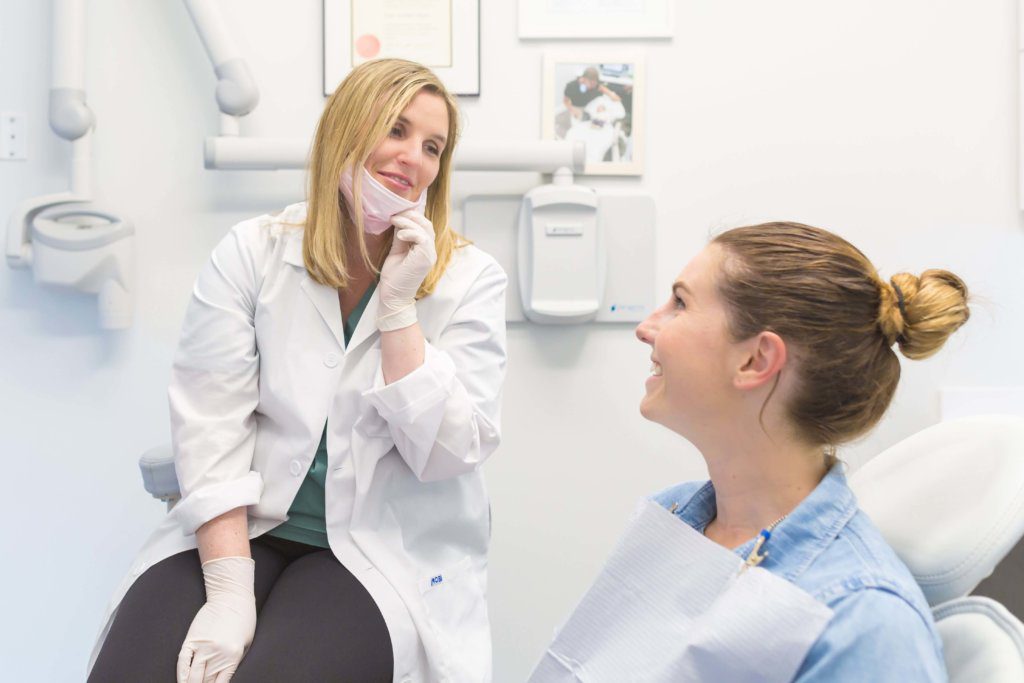Everything You Need to Know Before Visiting an Orthodontist

Answering Our Patients' Top Orthodontist Questions
Understanding what to expect from the orthodontist’s office can help ease any anxieties and prepare you for your teeth-straightening journey. Below, we’ve compiled a list of frequently asked questions to provide you with detailed insights into the process and practices of a typical orthodontist, specifically focusing on what you might experience with a New Jersey or Langhorne orthodontist.
An orthodontist is a dentist who has undergone additional training to specialize in diagnosing, preventing, and treating dental and facial irregularities. They are experts in managing tooth movement and guiding facial development. Orthodontists use a variety of appliances, such as braces or aligners, to correct issues like overcrowded teeth, overbites, underbites, and misaligned jaws. preventing, and treating dental and facial irregularities. They use a variety of devices, such as braces and aligners, to correct misaligned teeth and jaws, ensuring proper function and aesthetics.
The American Association of Orthodontists recommends that children have their first check-up no later than age 7. However, orthodontic treatment is not exclusive to children and teenagers; about one in every five orthodontic patients is over the age of 21. Whether you’re considering treatment for your child or yourself, a visit to an orthodontist can help determine the best time to start treatment.
at are positioned improperly. Effective orthodontic treatment can lead to a healthier mouth, a more pleasing appearance, and teeth that are more likely to last a lifetime.
Orthodontists treat a broad range of alignment issues, which can include gaps between teeth, misaligned jaws, overcrowding of teeth, and cosmetic issues related to the appearance of one’s smile and facial symmetry. These conditions can often lead to difficulty in chewing, speaking, and maintaining proper oral hygiene. dedicate their professional lives to creating healthy, beautiful smiles with the most efficient and effective treatment methods available.
The orthodontic treatment process starts with a consultation, during which the orthodontist conducts a thorough examination, discusses potential treatment options, and devises a personalized treatment plan. This plan may involve X-rays, digital scans, and impressions of your teeth. Treatment might include fixed braces, clear aligners, or other orthodontic devices depending on the specific needs of the patient.
schedule a consultation directly with an orthodontic office.
Visiting an orthodontist ensures that you receive professional orthodontic care within a convenient location. Our New Jersey and Langhorne orthodontists are skilled in the latest orthodontic techniques and technologies, offering personalized care that is as unique as the patients we serve. With advanced treatment options and a commitment to individualized patient care, you can expect effective and efficient treatment results.
The duration of orthodontic treatment varies significantly depending on the individual’s needs, the type of treatment, and how well the patient complies with their orthodontist’s instructions. On average, treatment can last anywhere from one to three years. During your initial consultation, your orthodontist will provide an estimated timeline based on your specific circumstances.
During the course of orthodontic treatment, you will typically visit your orthodontist every 4 to 8 weeks. These visits are crucial for the orthodontist to monitor the progress of your treatment and make adjustments to the orthodontic appliance as needed. These adjustments are essential to ensure the treatment is progressing as planned and to make any necessary modifications.
Braces aftercare refers to the steps a patient needs to take once their braces are removed to maintain the new position of their teeth. Retainers are the most common form of braces aftercare, and they must be worn as instructed by your orthodontist to prevent teeth from gradually shifting back to their original position. Effective aftercare is crucial to preserving the results of orthodontic treatment.
Following your orthodontist’s instructions for braces aftercare is crucial for maintaining the alignment of your teeth after treatment. Without proper aftercare, the teeth can shift, potentially requiring additional treatment to correct. Therefore, adhering to your orthodontist’s aftercare plan is essential for ensuring long-lasting results.
Absolutely! If you are considering orthodontic treatment, we encourage you to schedule a consultation with one of our experienced orthodontists in Langhorne or at one of our many locations across New Jersey. During this initial visit, we will answer any additional questions you might have, conduct a thorough examination, and discuss the best treatment options for your or your child’s individual needs.
Have More Questions? We’re Here to Help
We hope these FAQs have provided valuable insights into what to expect when visiting an orthodontist. If you have more questions or are ready to begin your journey to a healthier, more beautiful smile, don’t hesitate to reach out to our practice. Our dedicated team is ready to guide you every step of the way and ensure you receive the highest quality orthodontic care.


